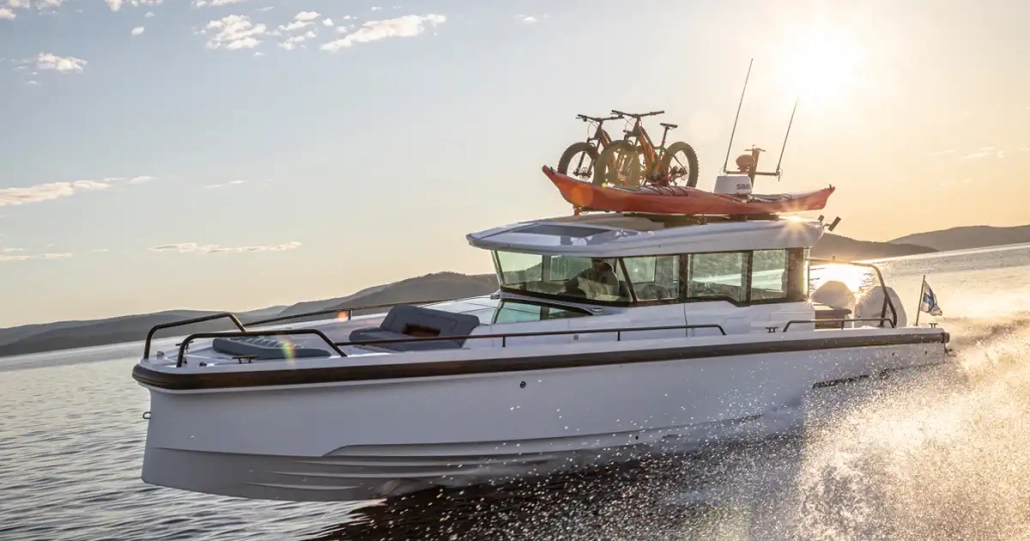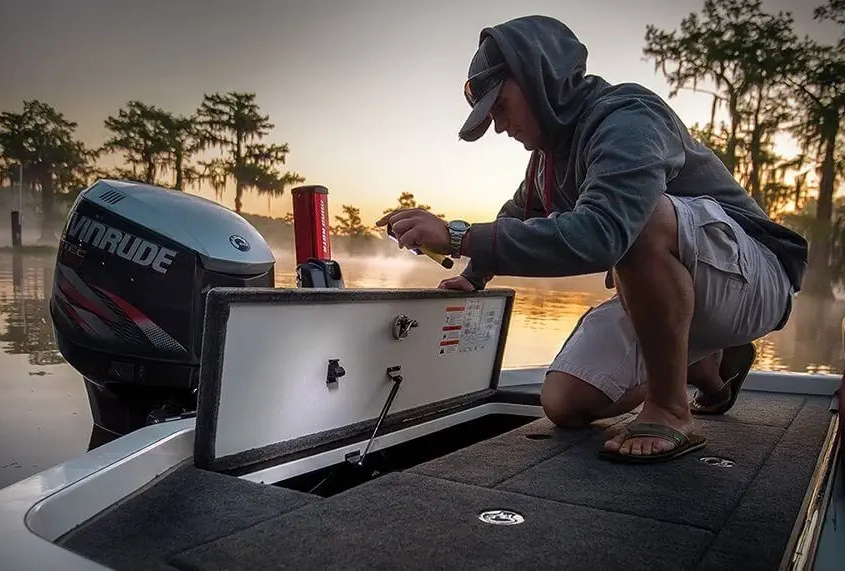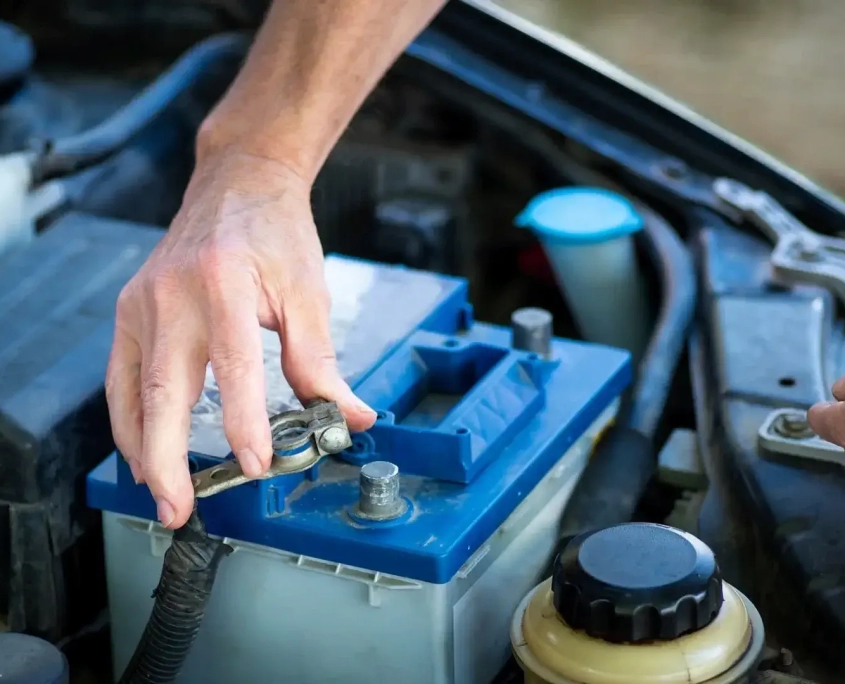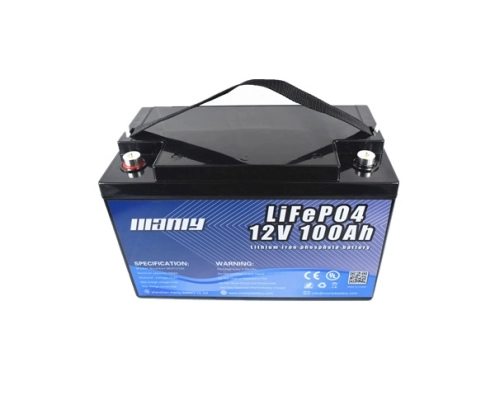La guía definitiva: batería marina versus batería de automóvil
Tabla de contenido
- La guía definitiva: batería marina versus batería de automóvil
- 1. Diferencia entre batería marina y batería de automóvil
- 2. Marine Battery vs Car Battery: A Performance Showdown
- 3. Evaluación de la viabilidad del uso de una batería de automóvil estándar en un barco
- 4. ¿Se puede utilizar una batería marina en un automóvil?
- 5. ¿Qué es una batería marina?
- 6. Descubriendo las características únicas de las baterías marinas
- 7. Comparing Marine Batteries and RV Batteries
- 8. ¿Qué tipo de batería es una batería marina?
- 9. Distinguir las baterías marinas por su composición química
- 10. Carga de baterías marinas: exploración del potencial de compatibilidad cruzada en la alimentación de una batería de automóvil
- 11. Conclusion
- Más información sobre la batería
We’re exploring a new topic today: comparing car batteries and marine batteries. You might wonder, “Aren’t all batteries the same?” But they’re not!
In our easy-to-follow guide, we’ll explain the main differences between marine and car batteries. We’ll also see how they perform in different tasks, consider whether we can use a car battery in a boat, and ask: Can a marine battery work in a car?
También aprenderemos qué hace que una batería marina sea especial y veremos sus características únicas. Incluso compararemos las baterías marinas con las baterías de vehículos recreativos.
We’ll clarify confusion about marine battery types and explore their materials. We’ll also determine whether a car battery can be charged with a marine charger.
Prepare for a fun ride as we help you pick the right marine battery. Time to dive into the exciting world of batteries!
1. Diferencia entre batería marina y batería de automóvil
To an ordinary glance, car and marine batteries look just the same. But here’s the surprising truth: Marine batteries pack quite a big difference compared to regular car batteries. To grasp this, let’s first get our heads around each battery’s unique roles.
Baterías de coche:
Car batteries have one major job—to kick-start a gasoline or diesel engine, no matter how hot or cold the weather is. In simple terms, car batteries give off a bunch of amps quickly to start the engine, then let the car’s alternator charge them up again. Car batteries have more but thinner lead plates. This setup allows them to release a big current to get the engine running. Their primary job is to start the engine.
Baterías marinas:
They’re like the multi-taskers of the battery world. Sure, they start engines, but usually smaller ones than those in cars. And their work doesn’t stop there. After getting the engine going, they must keep the lights on, the gauges working, and any boat gadgets up and running. This means they must give off power for a long time before running out.
Las baterías marinas son galletas duras. Tienen placas de plomo más gruesas construidas para soportar las sacudidas y golpes de un viaje en barco. Son 15 veces mejores para manejar las vibraciones que las baterías de automóvil. Además, sus terminales están diseñadas especialmente para barcos.
Puedes encontrar diferentes tipos de baterías marinas: de arranque, de ciclo profundo, de doble propósito (tanto de arranque como de ciclo profundo) y de litio de ciclo profundo. Cada uno tiene sus propios puntos fuertes para satisfacer sus necesidades de navegación. ExplorarBatería varonilLa diversa selección de baterías marinas y de automóviles. Encuentre la opción perfecta para sus necesidades con opciones personalizables como voltaje, capacidad, corriente, tamaño y apariencia.

2. Marine Battery vs Car Battery: A Performance Showdown
Marine batteries serve a distinct purpose. They’re not necessarily superior or inferior to other batteries and are tailored for a specific use. You see, marine batteries are built to take a beating. Imagine a day of water sports or fishing on the lake. The boat is bound to bounce, shake, and vibrate. Well, that’s precisely the harsh conditions marine batteries are for.
But wait, there’s more. Marine batteries come in different designs to match your needs. Marine Starting battery gives a burst of power to get your boat’s engine going. And as you’re out on the water, it recharges itself.
And if your boat is decked out with lots of power-hungry gadgets like trolling motors or fish finders, a Marine Deep Cycle battery is your best bet. It’s got the juice to keep all your boat toys running. So, whether you’re fishing or enjoying the water, your marine battery has your back.
3. Evaluación de la viabilidad del uso de una batería de automóvil estándar en un barco
Whether you’re cruising on land or sailing the seas, you’re relying on a battery in a motorized vehicle or vessel. But here’s a myth buster—these batteries don’t create power or electricity. Instead, they’re like busy squirrels, storing up electricity. The battery in your car or boat charges up while you’re using the machine, storing that charge for future use.
Let’s talk marine batteries. These guys are specifically designed for boats. They have threaded studs, making connecting eyelets like your onboard chargers easy. They’re built with materials tough enough to withstand the harsh conditions at sea. That makes them 15 times more resistant to vibrations than your regular car batteries. Plus, Marine batteries are fully sealed. So even if you’re hitting big wakes, there’s no fear of battery acid spilling.
Marine batteries have a wide range of uses, almost as many as automotive batteries. Some boat engines don’t need much power to start, while others might need several batteries to fire up the engine and run all the electronic accessories on board. So, it’s best to check out your boat’s power needs and pick a battery that meets them. That’s the way to a smooth sailing adventure!
4. ¿Se puede utilizar una batería marina en un automóvil?
Are you considering using a marine battery in a car? The answer depends on several factors.
First, let’s address the application. It can suffice if you’re contemplating using the marine battery as a jumpstart for your car’s engine. A marine battery possesses enough cranking power to ignite your engine in car jumpstarting scenarios.
Pasando a consideraciones de voltaje. Si la batería estábatería marina de 12v,Entonces es aplicable para un coche. Esto denota que puede servir como batería de arranque y de ciclo profundo, lo que permite versatilidad al usar una batería marina en un automóvil.
A continuación, tenemos que considerar las dimensiones. Para emplear una batería marina en un automóvil, la orientación y las dimensiones de los terminales deben alinearse con las de una batería de automóvil convencional.
Yet, another crucial aspect to remember is that cars typically don’t require the deep cycle power that marine batteries provide. Cars perform optimally with starter batteries. Marine batteries, conversely, are engineered for deep, uninterrupted cycling. Their design facilitates complete charging, discharging to 50%, and recharging.
En última instancia, utilizar una batería marina en un automóvil puede no ser la mejor opción para alimentar el vehículo. Potencialmente, podría acortar la vida útil de la batería e incluso afectar la longevidad de los componentes eléctricos de su automóvil.

5. ¿Qué es una batería marina?
Your car battery kicks into action when the engine starts. It gives out a high amount of power in a short span. Once the engine is on, the alternator fuels your car’s electronics and recharges the battery.
On the other hand, boat batteries cater to a broader array of power needs. In addition to starting the motor, they fuel lights, gauges, pumps, and more in smaller boats. Diverse battery types may be needed for fishing and live-aboard vessels for household systems or electric motors.
Las baterías marinas están diseñadas para ser resistentes. Utilizan materiales sólidos para soportar el duro entorno del barco, lo que los hace un 15% más resistentes a sacudidas y golpes. Además, sus terminales roscados facilitan la conexión de dispositivos electrónicos.
Boats don’t have the luxury of smooth roads or suspensions, so marine batteries are encased in sturdy, large polyurethane shells to handle the extra bumps. They also have distinct ratings. While car batteries are measured by Cold Cranking Amps (CCAs), marine batteries use Marine Cranking Amps (MCAs) to show the amps delivered at 32℉ along with CCAs.
Marine batteries come in diverse types to cater to every boat’s power needs. Whether you need a Starting, Deep Cycle, Dual-Purpose (Starting and Deep Cycle), or Lithium Deep Cycle Battery, a perfect marine battery awaits you.
6. Descubriendo las características únicas de las baterías marinas
Banco de baterías para barcos multiusos único
The most basic system features a single, multi-use battery bank. This type of battery system is typically found in day-use boats, like speedboats or recreational crafts. Its main job is to kickstart the engine and power your radio or navigation lights if it gets dark. The battery doesn’t face high power demands, and you usually wouldn’t deplete it enough to cause harm.
However, be careful not to leave the lights on or run the radio too long. These actions could potentially hurt the battery, leaving you stranded without a way to start your engine.
Batería separada del motor de arranque y de pesca por curricán
If you have a dedicated fishing boat with a trolling motor, you’ll need both a starting battery and a deep-cycle trolling marine battery bank. Trying to run a trolling motor all day on a starting or multi-purpose battery is not a good idea. The battery would drain fast, and deep cycling could harm a starting or multi-purpose battery. This could potentially leave you stuck, as your trolling motor could drain the starting battery.
Bancos de baterías para barcos con sistema de arranque y alojamiento separados
Los barcos que viven a bordo, como casas flotantes, veleros y catamaranes, también necesitan varios tipos de baterías. Necesita sistemas de baterías para alimentar los aparatos electrónicos y electrodomésticos cotidianos. Esto cubre luces, ventiladores, alimentación de CC para electrodomésticos y quizás inversores. En muchos sentidos, el sistema de banco de baterías de una casa flotante no es diferente del sistema de baterías de una casa fuera de la red o de un vehículo recreativo. Sin embargo, como la mayoría de los barcos, también requieren una batería de arranque para el motor.
7. Comparing Marine Batteries and RV Batteries
In most cases, marine and RV batteries can be used for either purpose. You may even find special Marine/RV hybrid batteries designed for both uses. The key is finding a battery that fits your vehicle’s needs and yours.
Many standard car batteries will do the job if you just need a cranking battery to start your RV. But if you need a battery that can start your RV and power home electronics, you should check out MANLY batería marina de 12vlíneas de baterías marinas/para vehículos recreativos de doble propósito.
For larger RVs packed with electronics, you might need several batteries: one to start the RV and deep cycle batteries to power the living area.

8. ¿Qué tipo de batería es una batería marina?
Los tipos de baterías marinas vienen en tres formas: de arranque, de ciclo profundo y de doble propósito. Cada uno tiene una tarea especial.
The starter battery turns on your boat’s engine, giving it a quick, strong power jolt. However, it can’t keep the engine going.
Next is the deep cycle battery. It’s built with thicker plates than the starter type, which allows it to offer steady, ongoing power. You can charge and use it many times. It’s perfect for running things like your trolling motor, lights, GPS, and fish finder.
Luego está la batería marina de doble propósito. Puede realizar ambos trabajos anteriores. Pero puede que no sea perfecto en ninguno de los dos. Es posible que algunos no puedan arrancar ciertos motores. Es posible que otros no duren tantos ciclos como los de ciclo profundo. Sin embargo, las baterías de litio son la mejor opción para tareas duales. Los motores de pesca por curricán suelen necesitar una batería de litio.MANLY Batería marina de litio de 12v 100ahpodría ser justo lo que necesitas. Además, puedes ordenarbatería marina de 12vque se personalizan según sus necesidades.
Además de los tipos de baterías marinas, también se pueden agrupar por “química”.
9. Distinguir las baterías marinas por su composición química
Batería marina de plomo ácido
Two main kinds of lead acid marine batteries exist: flooded lead-acid (FLA) and absorbent glass mat (AGM).
FLA batteries have lead plates. They sit in a mix of sulfuric acid and water. The chemical reaction makes gases. These gases need to get out into the air, which lets some water out of the battery. Because of this, FLA batteries need regular care. You must add water to them. This is important to keep the plates underwater and safe from air.
AGM batteries also have lead plates, which are put between fiberglass mats. The mats soak up the mix of sulfuric acid and water, making the battery a closed unit. AGM batteries don’t need care or topping up with the mix. Little to no gas is made. If there is too much gas, a vent lets the gas out to keep the pressure inside right.
Lead acid batteries are easy to find and replace if necessary. They are also the most common and easy-to-get deep-cycle battery. They also cost less, which is good for those who don’t have much money.
Lead-acid batteries are a good choice for starter batteries. They do not contain electronics, which means they can provide a large amount of power.
Bad points about lead-acid batteries are that they need more care than other deep cycle batteries to keep them working well. AGM batteries cost more than FLA batteries. They also do not give more power, even though they do not need as much care as FLA batteries.
Deep cycle lead-acid batteries will get damaged if they are run down below half of their power. Also, as lead-acid batteries run down, their power drops. So, you normally only get about half of the power that the battery says it has.
Even though deep-cycle lead-acid batteries cost less at first, they also last only 2-5 years, which is the shortest time. Lead plates make lead-acid batteries very heavy, which is not suitable for boats where weight is essential. Lastly, FLA batteries are not closed, so you must keep them upright to prevent the acid solution from leaking.
Lead acid batteries are big and heavy, which are not suitable for boat batteries. We’re talking about 80 lbs per battery, and you might need 2 or 3 depending on how much power you need. That’s like having an extra person or two on board! Plus, they take the longest time to charge.
Lithium Marine Battery
Deep cycle lithium batteries store power using lithium salt instead of sulfuric acid and lead plates. Their many benefits often justify their high initial cost, especially for boat use. Also, MANLY 12v 100ah lithium marine batteries are dual-purpose, so they can start your engine and run your lights, fish finder, and more.
Cosas buenas de la batería de litio de ciclo profundo:
You can run down lithium deep cycle marine batteries to 80% or more of their power without damaging them. Also, they charge much faster than lead acid batteries if you have the right charge controller. This makes lithium marine batteries much more efficient.
Lithium deep cycle batteries have a battery management system (BMS). This checks the battery’s health and eliminates the need for regular care. The BMS also improves charging and draining across the battery’s cells. It ensures the battery is always working within its safe limits. These things result in the lifespan of a lithium battery being 2-5 times that of a lead-acid battery.
Lithium batteries are smaller, lighter, last longer, and charge faster. Using lithium marine batteries can reduce your boat’s battery weight by up to 70%.
Lithium also offers a safer marine battery that won’t leak. They don’t need any care, leaving you more time for boating and fishing. Boaters will love that they provide the same output at 100% charged as 50% charged. So your trolling motor and gadgets will work as well at the end of the day as they did at the beginning.
Cosas malas de la batería de litio de ciclo profundo:
The biggest disadvantage of lithium marine batteries is their first upfront cost. However, you often end up saving money in the end. This is because they usually last five times longer than traditional lead-acid batteries.
Another thing to consider is that lithium batteries have a much lower maximum amperage output than lead-acid batteries. This means they are not a good option for starting batteries that require high cranking amps.
10. Carga de baterías marinas: exploración del potencial de compatibilidad cruzada en la alimentación de una batería de automóvil
You can definitely use a marine battery charger to charge your car battery. Many chargers in marine battery charging are designed to accommodate various battery types. A notable feature of these chargers is their waterproof design, making them suitable for onboard installation. However, it’s crucial to note that some marine battery chargers, especially those tailored for onboard use, may only have marine battery connectors, which might not fit a car battery.
Hoy en día, la mayoría de los cargadores utilizados en la carga de baterías marinas son inteligentes y automáticos. Pueden identificar el tipo de batería y seleccionar el modo de carga apropiado. Pero, nuevamente, es posible que algunos cargadores marinos diseñados específicamente para uso a bordo solo tengan conectores de batería marina. Esto podría suponer un problema de compatibilidad con la batería de un coche.
11. Conclusion
En resumen, es justo decir que las baterías de litio cuestan un poco más. Son el tipo de baterías marinas más caras. Pero ese es sólo el costo inicial. Dada su larga vida útil (más de 10 años), con el tiempo ahorrarás dinero. Probablemente estés planeando disfrutar de tu barco durante al menos una década, ¿verdad? Entonces, ¡el litio es una excelente opción! ¿Listo para elegir el perfecto para ti?Haga clic aquí para explorar más productos.





